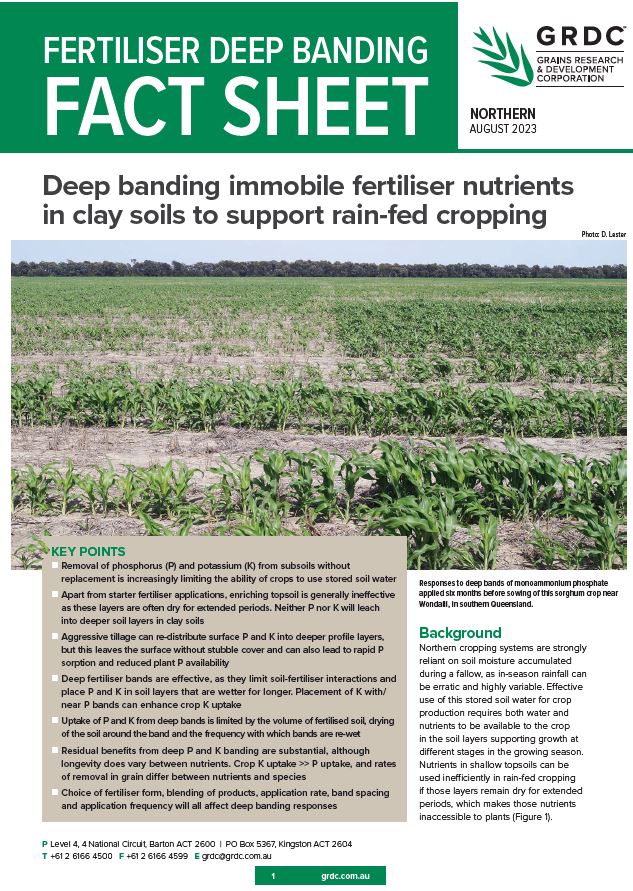Fertiliser Deep Banding
Fertiliser Deep Banding
Published: 7 Aug 2023
Deep banding immobile fertiliser nutrients in clay soils to support rain-fed cropping.
Key points
- Removal of phosphorus (P) and potassium (K) from subsoils without replacement is increasingly limiting the ability of crops to use stored soil water
- Apart from starter fertiliser applications, enriching topsoil is generally ineffective as these layers are often dry for extended periods. Neither P nor K will leach into deeper soil layers in clay soils
- Aggressive tillage can re-distribute surface P and K into deeper profile layers, but this leaves the surface without stubble cover and can also lead to rapid P sorption and reduced plant P availability
- Deep fertiliser bands are effective, as they limit soil-fertiliser interactions and place P and K in soil layers that are wetter for longer. Placement of K with/near P bands can enhance crop K uptake
- Uptake of P and K from deep bands is limited by the volume of fertilised soil, drying of the soil around the band and the frequency with which bands are re-wet
- Residual benefits from deep P and K banding are substantial, although longevity does vary between nutrients. Crop K uptake >> P uptake, and rates of removal in grain differ between nutrients and species
- Choice of fertiliser form, blending of products, application rate, band spacing and application frequency will all affect deep banding responses
Want a hard copy?
GRDC produces a range of publications to share the RD&E knowledge generated from our investments with grain growers and the broader industry.
Printed publications
Printed copies of some publications are available for growers, advisers and farming systems groups, for personal use and distribution at GRDC events.
Contact GroundCover Direct on 1800 11 00 44 or email ground-cover-direct@canprint.com.au to request copies. Publications are free but postage and handling costs may apply.
Download PDF
Region: North
GRDC Project Code: UOQ1207-001RTX,

